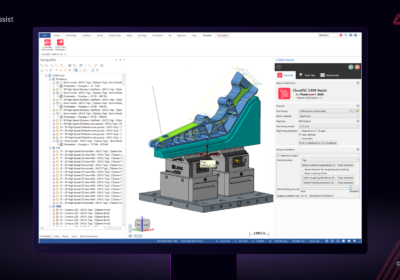Electrical heating systems have several safety features built in to prevent dangerous situations. High-limit sensors, or safety sensors, are one of the most important. Not only do they protect people, they help keep manufacturing lines running by limiting damage to equipment and product. In this article, Jeremy Ohse at industrial heater, temperature sensor, and controller manufacturer, Watlow, explores best practice and considerations for high-limit safety sensors.
Understanding safety sensors
Thermal loops consist of a heater, temperature sensor, and heater controller. The controller has a temperature setpoint, receives a signal from the temperature sensor, and modulates power to the heater to maintain the temperature setpoint.
If there is a failure in the primary thermal control loop, the redundant safety sensor can tell the controller to reduce power to the heater or shut down the entire system. The most common failures are physically damaged sensors, worn out components, and pinched wires.
In an application away from industry, a hot tub uses a high-limit sensor to prevent the water from getting too hot. If the primary control loop fails, the heater will continue to heat the water. When the water temperature reaches a certain level, usually between 110 and 120 °F, the high-limit sensor disables the heater to keep the water at a safe, enjoyable temperature.
To provide additional safety, when the high-limit sensor trips the system, users are “latched out” until the system is inspected and reset by an operator, system designer, or manufacturing engineer. Once the system is repaired and reset, it will operate normally again. In the hot tub example, the high-limit sensor will likely disable the pump in addition to the heater. A technician may need to inspect the hot tub and replace the primary sensor — or other defective parts — before resetting the system. This safety latch is often achieved in industrial systems through a programmable temperature controller and mechanical relay.
High limit applications
The high limit sensor in these scenarios are often thermistors, resistive temperature detectors (RTDs), or thermocouples (TCs). The best type of high-limit sensor is application dependent. The controller is often programmable so the user can adjust the primary control loop and the safety control loop temperature setpoints.

Location is essential
For the safest operation, the safety sensor should be attached directly to or immediately adjacent to the heat source. The farther the safety sensor is from the heat source, the more likely unwanted damage will occur when the safety control loop is engaged. For this reason, Watlow offers many heating products with sensors already embedded in the heaters.
Multiple high-limit sensors are used on large heating systems. A very large circulation heater may have several safety sensors to help identify failures in different sections of the heater. This approach allows operators to identify potential issues before they become a bigger problem.
Additional considerations
While the primary sensor and safety sensor are often two separate physical objects, they both plug into a single heater controller. Just as there could be a failure in the sensor, there could be a failure inside the heater control. If the heater controller is agency certified (UL, CE, or ETL), it’s likely there are two independent micro-controllers inside the heater control box, one for the primary thermal loop and one for the safety loop. This second safety micro-controller is an important often forgot about distinction when selecting a heater controller. Look for the agency marking and inquire with the manufacturer if in doubt. Runaway thermal systems create risk of both fire and electrical shock.
Some systems involve a chemical reaction. Even after the heater is turned off, the chemical reaction may continue. If it becomes exothermic and continues to produce heat, shutting down the heaters will not stop the temperature from continuing to rise. In this example, the safety sensor could activate a fire suppression system.
A less accurate, lower cost method to provide safety could utilize a resettable thermostat or thermal fuse instead of a high-limit safety sensor. These devices are wired in series with the heater and create an open circuit when a manufacturer pre-defined temperature is exceeded. These alternatives can be good solutions in some applications, but nearly always have lower performance and are driven by cost.
Watlow integrates all types of thermal safety sensors into our heaters: TCs, RTDs, thermistors, thermostats, and thermal fuses.
High-limit safety sensors are a critical part of safe heating systems. By using the most suitable safety sensor and following best practices, your system will have the best opportunity to prevent unforeseen accidents and damages.
Watlow provides a range of industrial thermal sensors. Discover them on the website.








